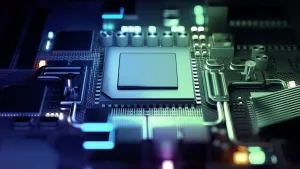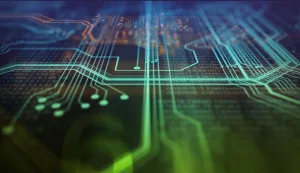
Trends, tactics, teams, and technology to consider for innovative product development!
The Internet of Things (IoT) revolution is already transforming businesses and everyday life. With IoT, objects become “smart” and seamlessly integrate into a global network capable of generating significant economic, social, and business benefits. To fully realize the benefits of IoT, accurate and reliable data is essential. Combined with reliable, secure, and cost-effective connectivity solutions, high-quality information can enable companies to generate new revenue streams and improve their processes using embedded systems.
Ensuring security for embedded IoT designs can be challenging and time-consuming, even for veteran developers. This article aims to show how embedded systems are fundamental to the rise of connected devices and why you need experienced engineering partners to accelerate your digital transformation.
The Internet of Things (IoT) refers to physical things or objects integrated with sensors, software, or other sophisticated technologies. The IoT differs from the traditional Internet because it does not depend on human intervention. It allows the connection and exchange of data with other devices and systems using an Internet connection. Intelligent home security systems, autonomous agricultural equipment, wearable health monitors, connected thermal cameras, and wireless trackers are all examples of how IoT can work beautifully. It is estimated that by 2025, the world will have 22 billion IoT devices.
The ‘Thing’ in the IoT is an embedded system. An embedded system is a microprocessor-based computer hardware system with software designed to perform a specific function, either as a stand-alone system or as part of a larger system. At the heart of the system is an integrated circuit designed to perform calculations for real-time operations. It’s the core part of the computing system of any electronic device.
Several types of embedded systems exist, such as stand-alone, real-time, networked, and mobile embedded systems. “All IoT devices have embedded systems, but not all embedded systems are IoT.” Adding a layer of information and communication technology to your embedded systems is all you need to turn them into IoT systems. For example, when you want an embedded device to communicate with an ecosystem (other embedded systems, cloud, internet), communication channels such as WiFi, RF, 5G, LoRa and others are brought into the equation.
But since a cyber threat to connected devices is always possible, it is essential to secure the embedded applications to protect the data just like any connection via the internet must be secured.
There are many complex aspects to an IoT project – from hardware connections to event-based workflows and from cloud to secure data services. The risks are exponentially higher because more data is being shared via IoT among many more stakeholders, and more sensitive data is being shared.
The vast majority of IoT decision-makers are concerned about the security of their IoT device. And for good reason, IoT devices form gateways to homes, workplaces, and sensitive data. As we mentioned, they are a prime target for malicious attacks. Beyond the immediate costs, a data breach strongly impacts the company’s reputation.
Transforming standalone devices into intelligent and networked versions tailored for the respective market segments is challenging for some industries.
Traditional industries need help to modernize/catch up with current technological advances. For example, the medical industry has significantly accelerated its digital transformation in the last two years. The shift to remote work across all industries and the rapid growth of technology, storage, processing, and access to large amounts of data has forced this industry to transform its processes, services, and products.
Leading companies need niche expertise related to the integration of emerging technologies. Accelerating at a lightning pace can be difficult for developers, who struggle to keep up with available technologies, especially in the ai and IoT segment. For example, in the automotive industry, the need for vehicles to become more integrated with digital ecosystems opens new revenue opportunities and for manufacturers to reshape their product development process.
With demand being the main driver for the growth of connected devices, embedded systems are fundamental to the daily activities of individuals and businesses. The challenges for the industry to develop products in a reasonable time frame but of sufficient quality to gain the trust of their users are obvious and require secure solutions.
As a result, companies are increasingly looking for leading strategic design partners who can bring together all the skills required to deliver IoT solutions – covering device-level embedded systems, gateway protocols and cloud-based back-end infrastructure. This approach can benefit innovative companies, accelerating timelines and reducing costs while making products safe and quickly available to potential markets.
At Orthogone, we deliver high-quality embedded systems solutions encompassing industries like telecom, aerospace & defense, automotive, security & surveillance, and medical sectors.
Realize new growth opportunities and unlock safer and more inclusive use of technology.
Expand your expertise. Co-innovate with us.



